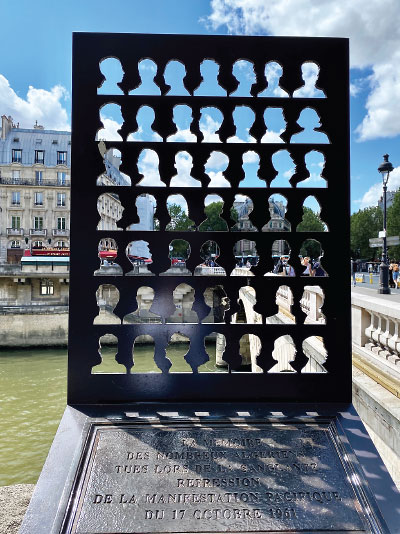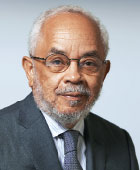Paris is a beautiful and beguiling city. Visitors must be careful about reacting too quickly to the city’s obvious charm and seduction. I recently attended a Paris performance of Claudio Monteverdi’s 1610 Vespers (“Vêpres de la Vierge”) at the modern auditorium of the stunning Radio France building. A few days later, I was listening to lectures at the Quai Branly Jacques Chirac Museum on the artistic culture of Bénin, formerly the French colony of Dahomey. Such experiences in quick succession induce relaxation, intellectual stimulation, and enjoyment of the surrounding aesthetics. However, sustaining that state of mind is hard.
I am sitting one evening in a small theater watching a play, “Là-Bas de L’Autre Côté de L’Eau” (“Yonder on the Other Side of the Water”), written by Pierre Olivier Scotto and directed by Xavier Lemaire. The scene is French Algeria in the 1950s. Enter France, an attractive and lively young woman who is enamored of things French. She is in love with Moktar, a vibrant Algerian militant—that is, until a young French soldier shows up on the scene and gets France’s head and heart spinning. France’s mother, Marthe, whose husband died at the hands of French soldiers, is not pleased about her daughter’s new love interest. I knew immediately that we were on sensitive ground. Algeria is always a dangerous subject when one is in Paris.
William Gardner Smith’s newly republished book, The Stone Face, comes to mind. Smith first published the book in 1963 and focused on the experience of Black Americans exiling themselves to Paris around that time to flee the racism in the United States. An important theme in the book is the discovery by the main protagonist of a puzzling contradiction. The French welcomed the Black American exiles while venting wrath on the Algerians, who were at the bottom of the country’s caste system.
The Algerian War (1954-1962) is the setting for the play. The Algerian National Liberation Front (NLF) wants independence from France. However, there is a constituency of French Algerians, including Marthe, demanding the mother country stay the course, keep the colony, and maintain French identity. In the mid-1950s, the independence movement heated up with significant violence. The NLF placed its bombs in Paris and at home with terrifying effect. The French authorities responded firmly and matched terror with their own brand. The Paris Massacre, of October 17, 1961 (referenced in Smith’s book), saw policemen throwing NLF demonstrators into the Seine River, causing the death of hundreds. On October 17, 2019, this event was memorialized by construction of a stele, a monument with an inscription, placed at the Saint-Michel Bridge that crosses the Seine (see photo).
French and Algerians had been living side by side for years. Algerians served in the French Army and fought in World War II. However, the French government would not pay pensions to Algerian veterans, although French veterans were compensated. Each side had its grievances. Moktar, too, is caught in the violence. He wants the French out of Algeria. The trouble with that simple demand is that many French Algerians have never set foot in France; France is not their home. The audience understands that finding a solution to the conflict is not easy.
By the end of the play, we know that there can be no obvious triumph for anybody. There is a claim that personal identity has been clarified and solidified for some. Young France must put limits on her imagination. The French Republic recognizes long after the war that promises were broken to both sides. Many people died in the Algerian conflict.
There are always observers who insist that violence is the only way to overturn the caste ladder. The water between Algeria and France does not magically wash away memories and judgments of the other. If we are not careful, those recollections stoke the fire of vengeance. The path to reconciliation is uncomfortable, not pleasurable like listening to Monteverdi. Nevertheless, the play is a beautiful experience, even if heart rending, to witness dramatic art confronting struggles related to colonization, caste, and indignity. ■


